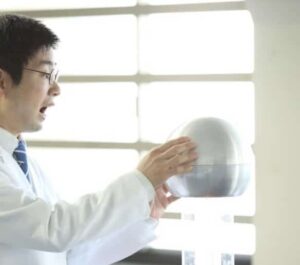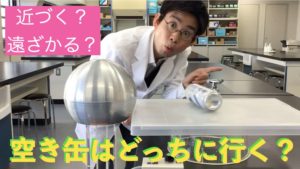The ‘Hamburger’ Battery: An Eco-Friendly, No-Fuss Daniell Cell Experiment!
I’m Ken Kuwako, Science Trainer. Every day is an experiment.
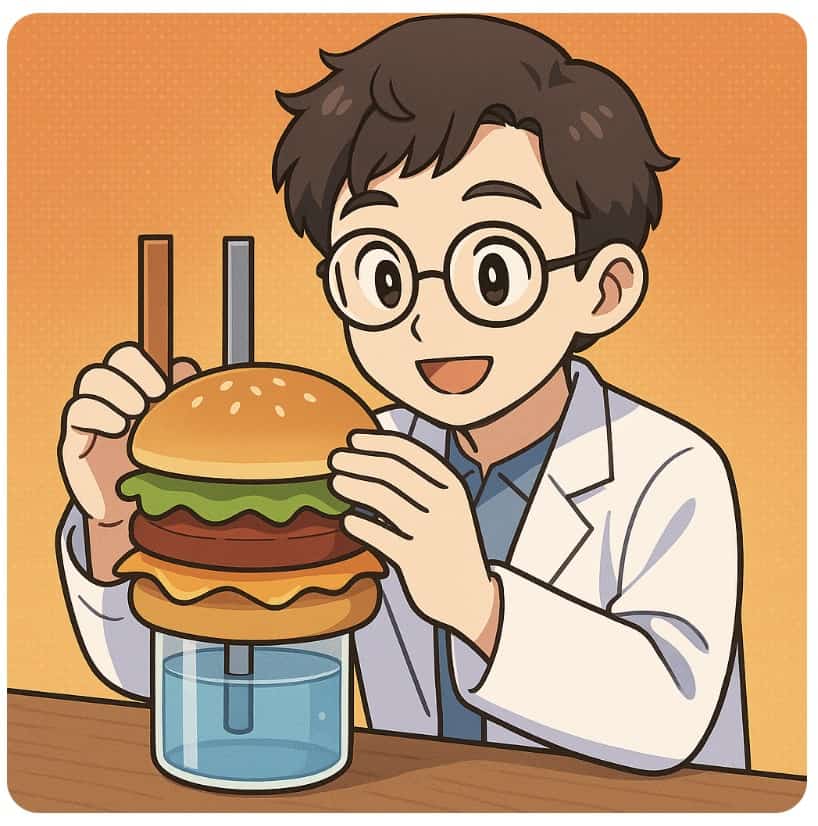 The “Daniell Cell” is an incredibly important topic for understanding how batteries work. However, many teachers might be struggling with the hassle of preparation or the difficulty of disposing of chemical waste, right?That’s why we’re introducing the one and only “🍔Hamburger Daniell Cell”! True to its unique name, this is a revolutionary, simplified version of the Daniell cell, constructed by stacking materials just like a hamburger. Beyond its fun appearance, its biggest appeal is that it produces significantly less waste liquid compared to a standard Daniell cell, making it environmentally friendly. Plus, since it’s easy to build with common, readily available materials, it drastically reduces the burden of lesson preparation.Of course, being a simplified version, it has the drawback that you can’t directly observe the solutions. But don’t worry! By combining it with a standard Daniell cell (for demonstration), you can utilize the advantages of both and deepen your students’ understanding.https://phys-edu.net/wp/?p=41763For example, you can visually demonstrate the movement of ions and the dissolution/deposition of metals with the standard cell, and then use the Hamburger style—which we’ll introduce next—to provide a hands-on, easy power generation experience. This combination allows students to grasp the fundamental principles of the Daniell cell from multiple perspectives, leading to deeper learning. Why not incorporate this “Hamburger Daniell Cell” into your lessons and conduct a fun, eco-friendly chemistry experiment that will make your students say, “Aha! I get it!”?
The “Daniell Cell” is an incredibly important topic for understanding how batteries work. However, many teachers might be struggling with the hassle of preparation or the difficulty of disposing of chemical waste, right?That’s why we’re introducing the one and only “🍔Hamburger Daniell Cell”! True to its unique name, this is a revolutionary, simplified version of the Daniell cell, constructed by stacking materials just like a hamburger. Beyond its fun appearance, its biggest appeal is that it produces significantly less waste liquid compared to a standard Daniell cell, making it environmentally friendly. Plus, since it’s easy to build with common, readily available materials, it drastically reduces the burden of lesson preparation.Of course, being a simplified version, it has the drawback that you can’t directly observe the solutions. But don’t worry! By combining it with a standard Daniell cell (for demonstration), you can utilize the advantages of both and deepen your students’ understanding.https://phys-edu.net/wp/?p=41763For example, you can visually demonstrate the movement of ions and the dissolution/deposition of metals with the standard cell, and then use the Hamburger style—which we’ll introduce next—to provide a hands-on, easy power generation experience. This combination allows students to grasp the fundamental principles of the Daniell cell from multiple perspectives, leading to deeper learning. Why not incorporate this “Hamburger Daniell Cell” into your lessons and conduct a fun, eco-friendly chemistry experiment that will make your students say, “Aha! I get it!”?
Materials Needed and How to Build It
The key to this Hamburger Daniell Cell is “cellophane.” Just like the “porous pot” or “salt bridge” in a standard Daniell cell, it acts as a “separator” that prevents the different electrolytes from mixing while allowing ions to pass through. Remarkably, even colored cellophane from a 100-yen store works perfectly, keeping both preparation effort and cost low. Furthermore, by using filter paper (or even a paper towel/kitchen paper) as the medium to soak up the solutions, you minimize waste liquid, making cleanup incredibly simple.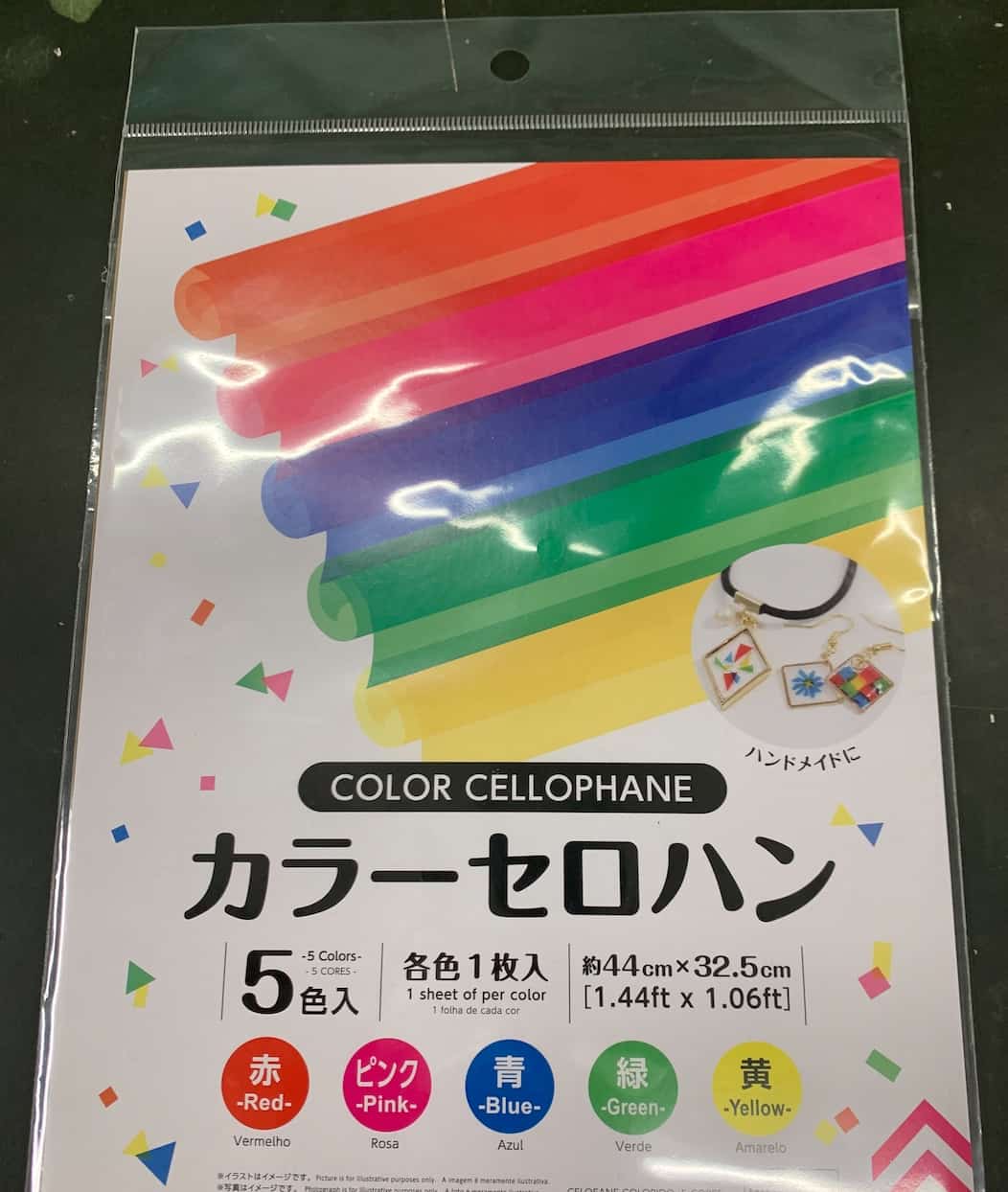
Neo Cellophane 8 Colors/8 Sheets Set
*And believe it or not, I was told that this experiment is possible even without cellophane, using plain copy paper! Also, a saturated salt solution can reportedly be used instead of zinc sulfate solution.【What You Need】
- Zinc Sulfate Solution ($\text{ZnSO}_4$): Approx. 5% (Dissolve 9.8g of zinc sulfate heptahydrate in 100g of water)
- Copper Sulfate Solution ($\text{CuSO}_4$): Approx. 17% (Dissolve 35.7g of copper(II) sulfate pentahydrate in 100g of water)
- 2 x Poly-pipettes (recommended here)
- 2 x Petri dishes
- Zinc plate
- Copper plate
- 2 x Filter papers (Paper towels/kitchen paper can be used)
- 1 x Cellophane sheet (I bought mine at a 100-yen store)
- 1 x Tissue paper sheet
- Propeller (small motor)
- Electronic melody circuit (#Nalica)
- Tester/Multimeter (recommended here)
- Alligator clips
- Tweezers
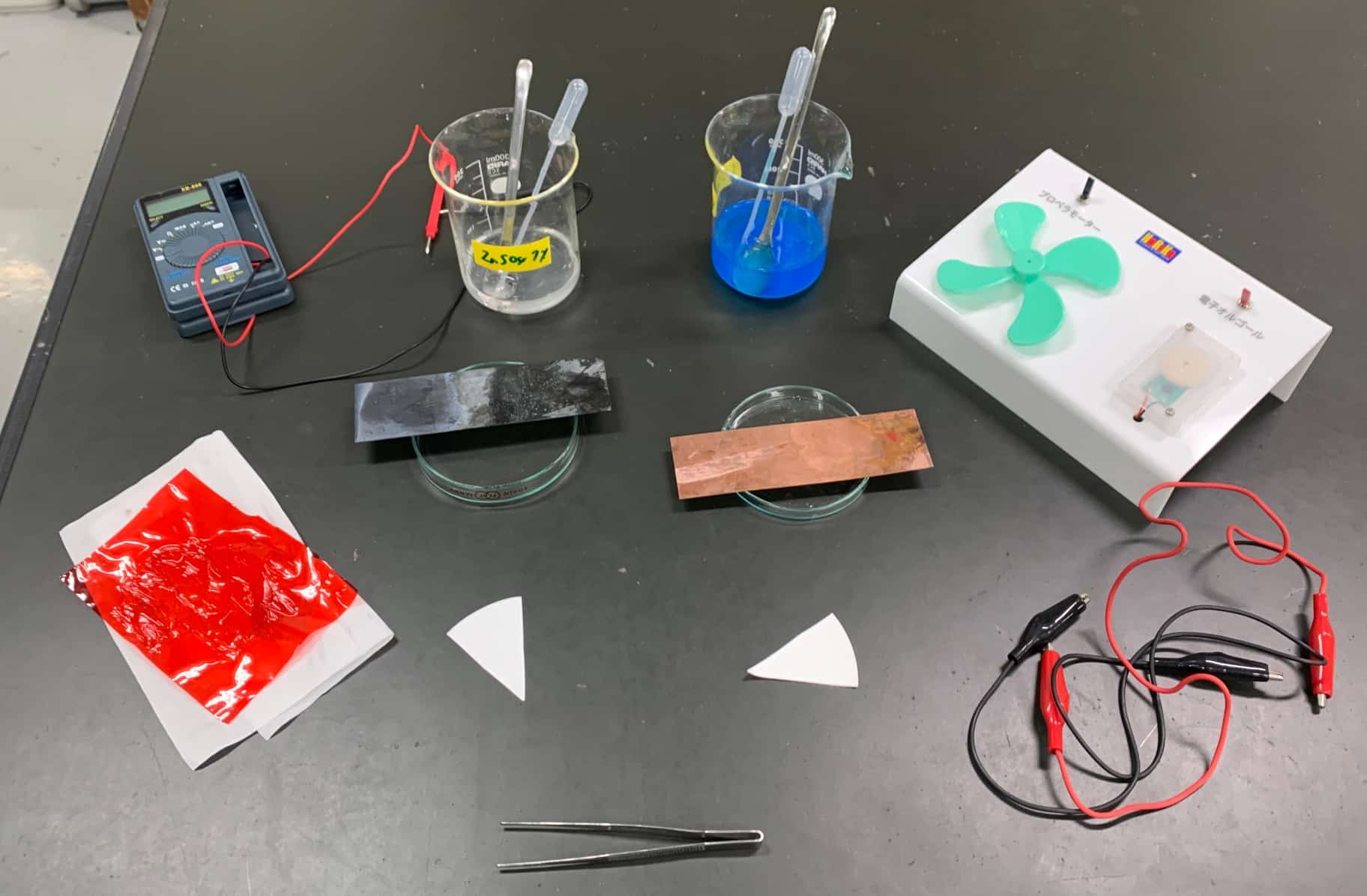
Here is everything you need.
Experimental Procedure
Now it’s time to assemble the Hamburger Daniell Cell. The steps are incredibly simple—you just stack the materials as if you were making a sandwich!Place the filter paper on a petri dish and soak it with the copper sulfate and zinc sulfate solutions using the poly-pipettes.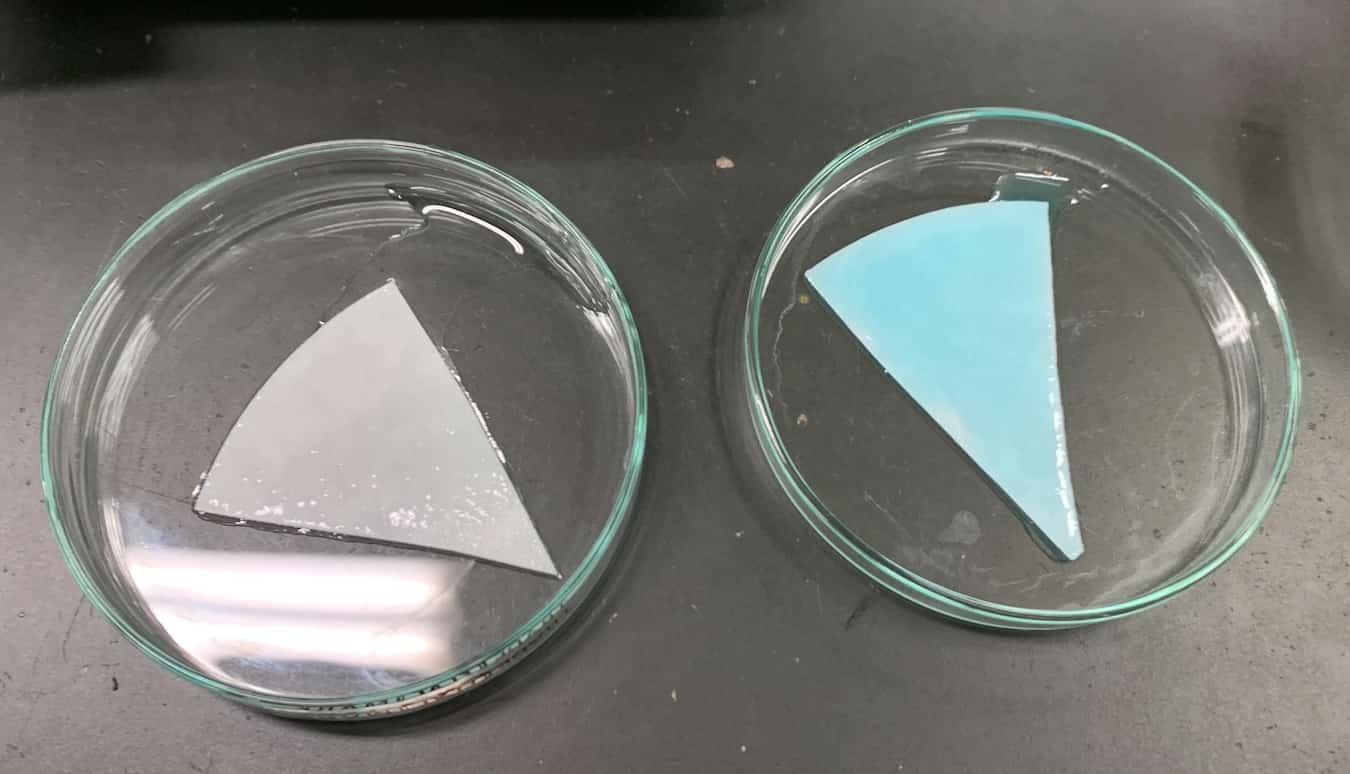 Place a sheet of tissue paper on the desk, and then place the copper plate on top of it. Do this at the edge of the desk. The stacking order is as follows:
Place a sheet of tissue paper on the desk, and then place the copper plate on top of it. Do this at the edge of the desk. The stacking order is as follows: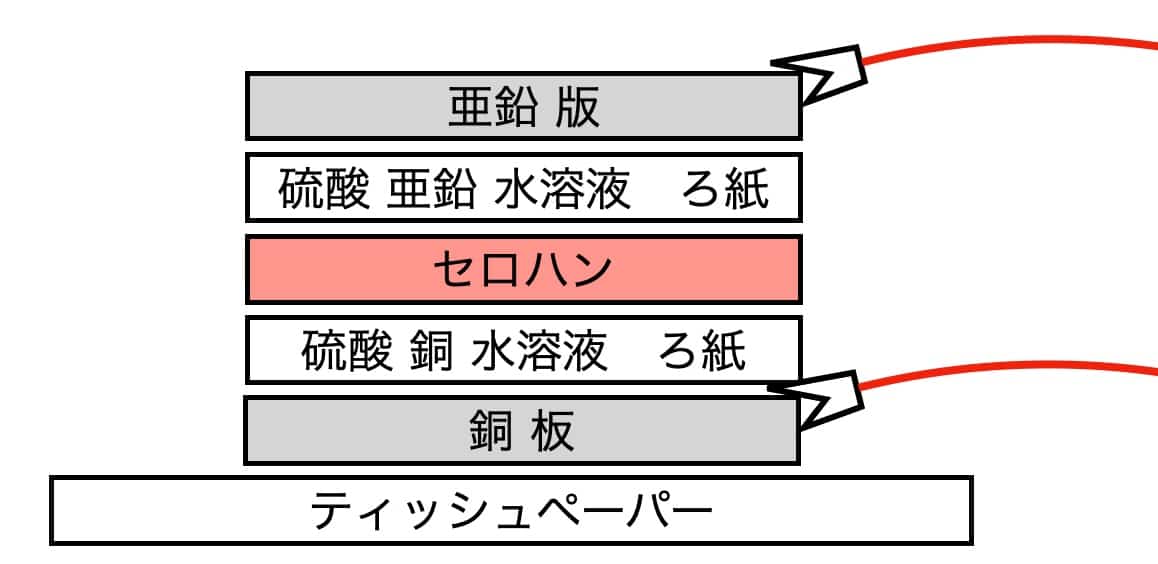
Lay down the tissue paper, place the copper plate, add the filter paper soaked in copper sulfate solution, and then place the cellophane on top.
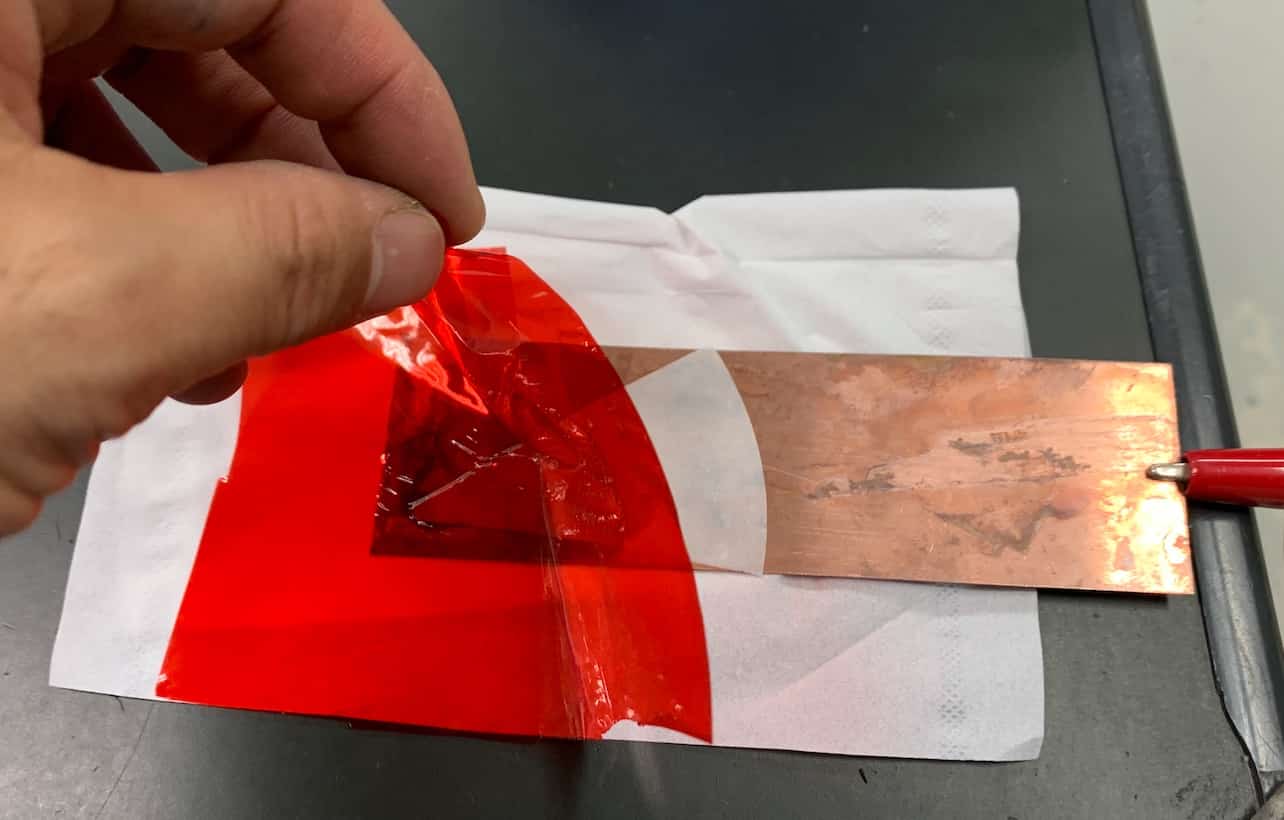
Next, add the filter paper soaked in zinc sulfate solution, and finally, place the zinc plate on top.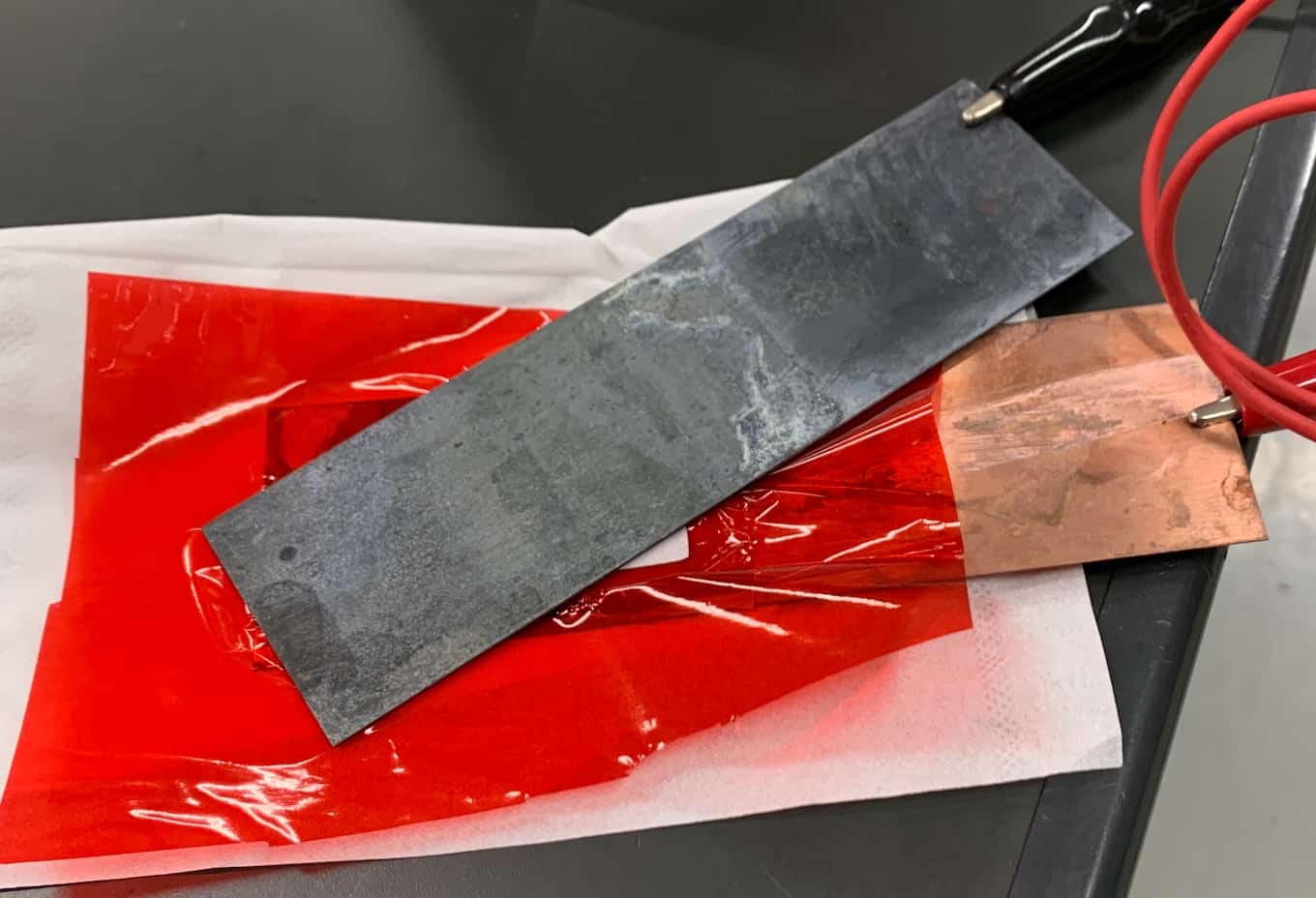 Be careful that the copper and zinc plates do not touch directly. Then, clamp them with alligator clips and connect them to an electronic music box or a motor. Afterwards, measure the voltage with a tester.https://youtu.be/DA5oORUdbO4
Be careful that the copper and zinc plates do not touch directly. Then, clamp them with alligator clips and connect them to an electronic music box or a motor. Afterwards, measure the voltage with a tester.https://youtu.be/DA5oORUdbO4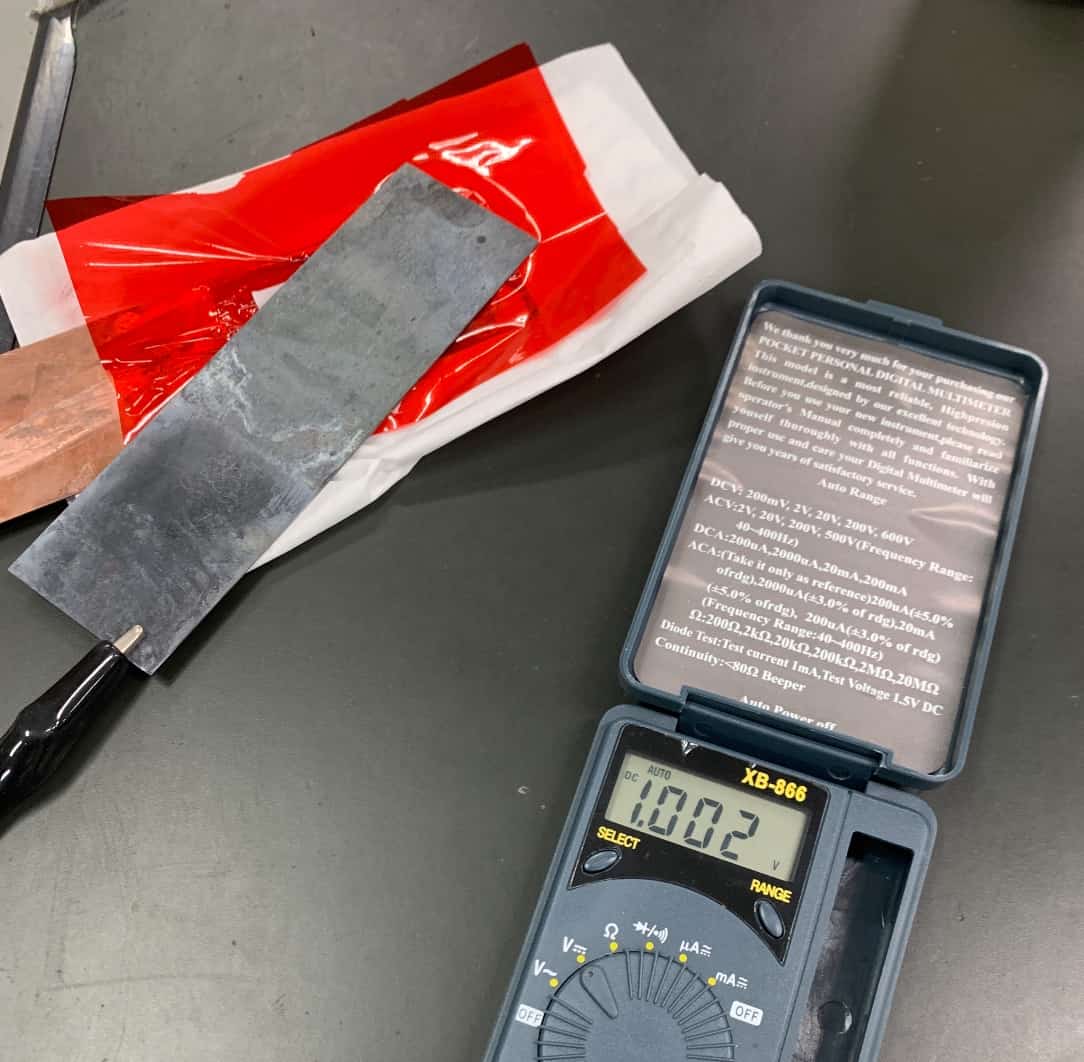
When I built mine, the electromotive force (voltage) was about 1V. It would be ideal if it reached around 1.1V.
To let the current flow for a while, connect the two terminals of the alligator clips (short-circuit condition) and leave it for about 2 minutes. Afterward, peel off the filter paper attached to each metal plate and observe the colors and other changes.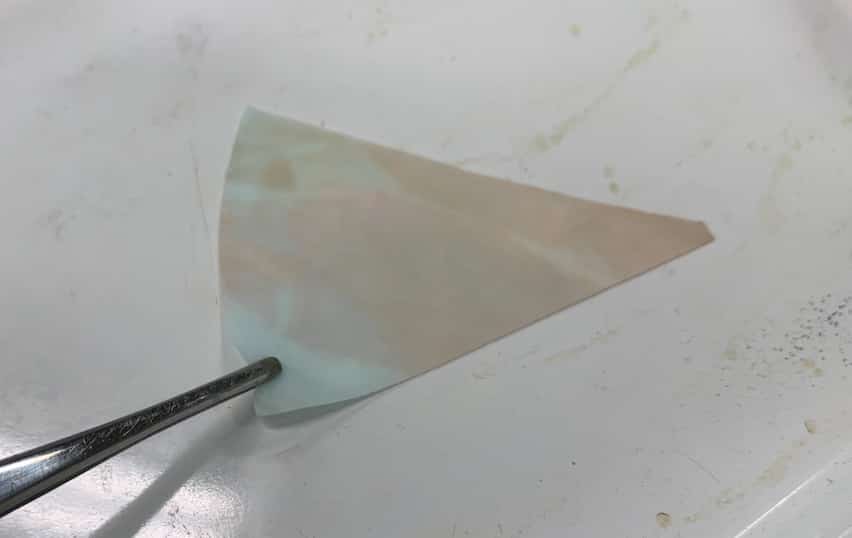
Filter paper that was on the copper plate. The color has become reddish.
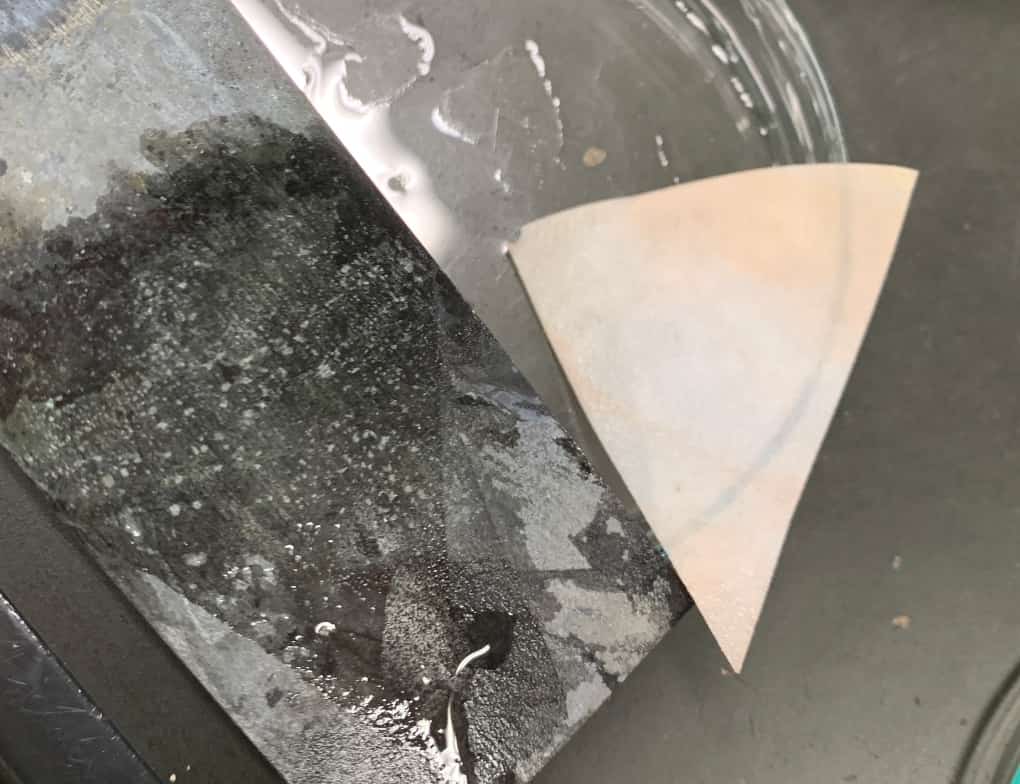
Filter paper that was on the zinc plate. This one has also turned brown, for some reason. Did copper ions pass through the cellophane?
Simply put, the Daniell cell is a device that generates electricity by utilizing the difference in the tendency of two different metals to become ions (a dissolved state in water).
How the Daniell Cell Works
Let’s look at the main materials used in a Daniell cell.
- Zinc plate (Zn): Acts as the negative electrode (anode, $-$ pole).
- Copper plate (Cu): Acts as the positive electrode (cathode, $+$ pole).
- Zinc Sulfate Solution ($\text{ZnSO}_4$): The liquid the zinc plate is immersed in.
- Copper Sulfate Solution ($\text{CuSO}_4$): The liquid the copper plate is immersed in, which is blue.
- Cellophane (or a Porous Pot): The separator that prevents the two solutions from mixing.
How Electricity Flows
Electric current is actually the movement of tiny particles called electrons. In the Daniell cell, there’s a “competition” that forces these electrons to move. This competition is about how strongly a metal wants to dissolve into the solution as an ion. (This is called the Electrochemical Series or Activity Series).
- Zinc (Zn): Really wants to dissolve! It wants to become a zinc ion , even if it means losing electrons.
- Copper (Cu): Doesn’t want to dissolve as much as zinc. In fact, the “copper ions” already in the solution want to gain electrons and return to metallic copper .
The entire mechanism of the battery is centered on this conflict: “Zinc wants to lose electrons” and “Copper ions want to gain electrons!”
The Flow of Electricity, Step-by-Step
- [Negative Electrode (Anode): Zinc Side] Zinc dissolves and throws out electrons!
The zinc plate throws out two of its electrons, transforming into a “zinc ion ,” which then dissolves into the zinc sulfate solution.
Zn → Zn²⁺ + 2e⁻ (Electron Release)
As a result, the zinc plate slowly dissolves and degrades. The expelled electrons travel through the conductor wire toward the copper plate. This is the flow of electric current!
- [Positive Electrode (Cathode): Copper Side] Copper ions accept electrons!
The electrons arrive at the copper plate via the conductor wire.The “copper ions ” (which are the source of the blue color) in the copper sulfate solution rush over to the copper plate and accept those two electrons .
Cu²⁺ + 2e⁻ → Cu (Electron Acceptance)
The copper ions that accept the electrons revert to plain copper atoms.Consequently, copper accumulates on (and “fattens up”) the copper plate. The blue color of the solution also fades.
What is the Role of the Cellophane?
The cellophane is a “separator” that prevents the two solutions from mixing immediately. But it’s not just a wall. Positive ions increase on the zinc side, while positive ions decrease on the copper side. If left alone, this would create an electrical imbalance. Therefore, negative ions , pass through the tiny holes in the cellophane to maintain this crucial electrical balance.For more information on the standard Daniell cell, please also refer to this article:
Inquiries and Requests
Bring the wonders and fun of science closer to you! We’ve compiled fun science experiments you can do at home and easy-to-understand tips. Feel free to search around!・About the site administrator, Ken Kuwako: Click here・For various requests (writing, lectures, experiment classes, TV supervision/appearances, etc.): Click here・Article updates are posted on X!
![]() Experimental videos are available on the Science Idea Channel!
Experimental videos are available on the Science Idea Channel!

